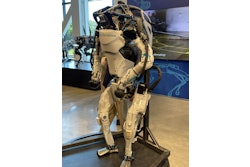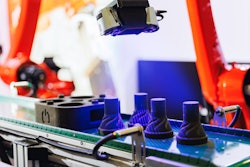That's one of the central messages in a recent white paper from Pilz USA. In this and the next edition of Machine Automation Newsletter, we present an abbreviated version of that white paper:
To lower people's inhibitions where interfacing with a machine is concerned, figures are being introduced to communicate with people on screen via speech, facial expression, and gesture.
Augmented reality is another approach. Here the idea is to pursue a strategy of improving communication through the provision of additional information. This added information is overlaid onto the fields of vision via special glasses. In this way, an expert in the office can overlay an arrow to identify a machine component directly to the on-site mechanic, thereby reducing the repair time.
Yet another approach is based on adaptive machinery, which is often discussed in conjunction with the issue of "artificial intelligence." The "Smart Home," for example, is a house equipped with sensors and actuators that assist residents. When they come home at night, the light is switched on automatically, for example.
These are just a few examples of what new technologies will bring, and in some cases, have already brought. The actual benefits of these emerging approaches remain to be seen. But the potential for improvement is there.
The catchphrase is "ergonomic operator guidance." As a machine's functionality increases, so too does its complexity, making it more difficult to operate. An ergonomic operating concept that has been adapted accordingly can provide a remedy.
The operating concept is adapted to the user of the machine and not the machine's functionality. It's helpful to think in basic terms about how the machine is used. In other words, you put yourself in the position of the operator so that the operating concept can be designed accordingly. Crucial questions to be asked include which operations are used regularly, which operations are seldom used, and which operations are used during commissioning?
Finally, these three considerations must be taken into account in providing ergonomic operator guidance:
* Color arrangement plays an important role; colors in an HMI screen should be employed sparingly and signal colors are used only for key points.
* In terms of font selection, it's important to revert to sans serif fonts and also to use no more than two fonts.
* When positioning the operator elements, it's important that operating personnel do not obscure displays during operation.
We'll present more from this white paper in the next Machine Automation Newsletter.


















